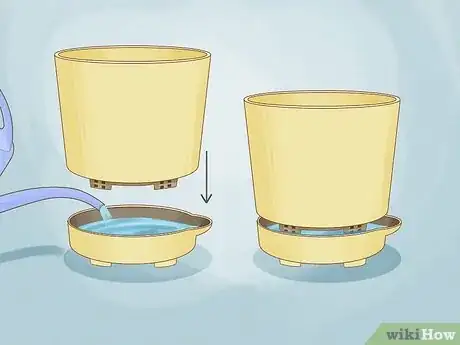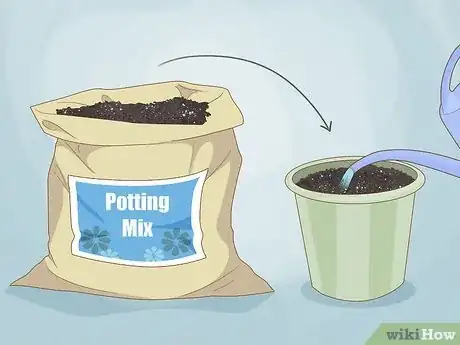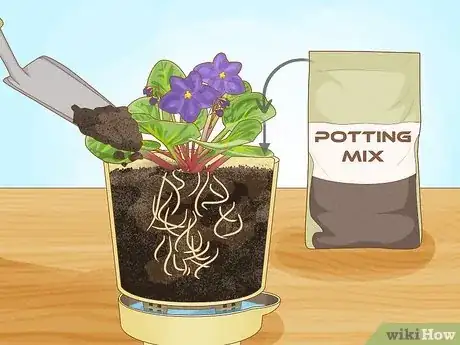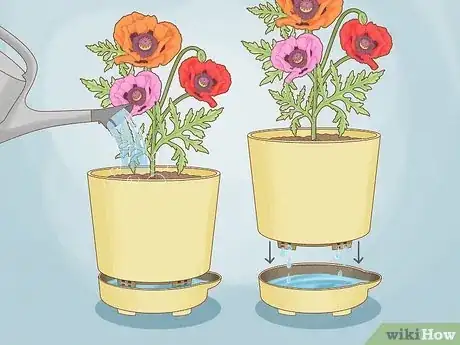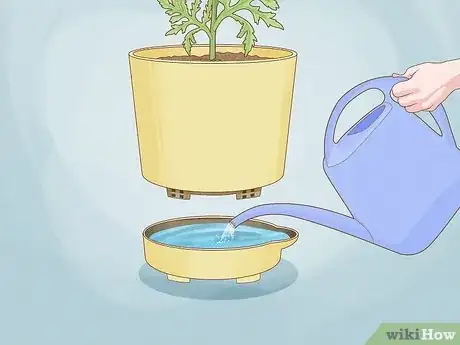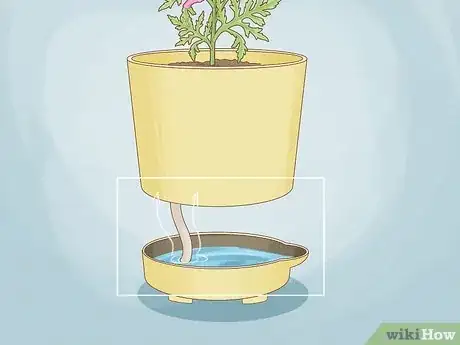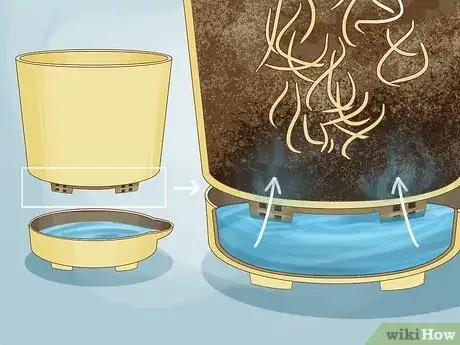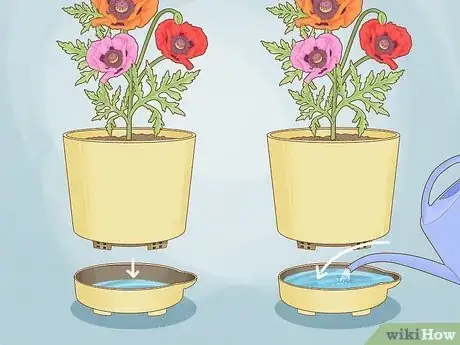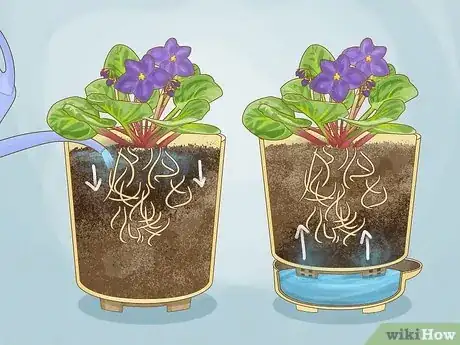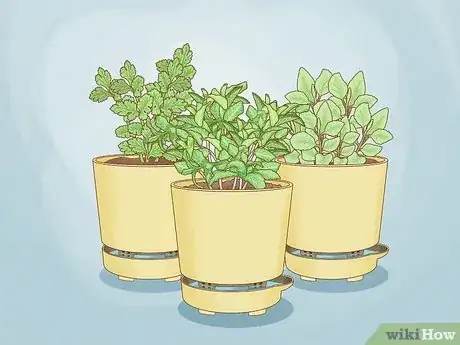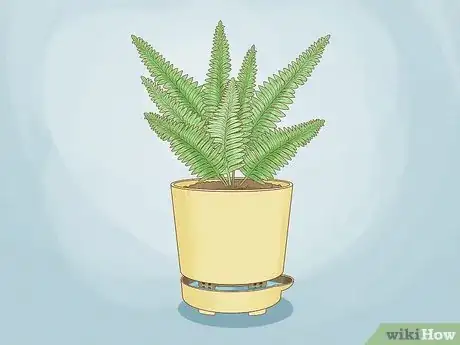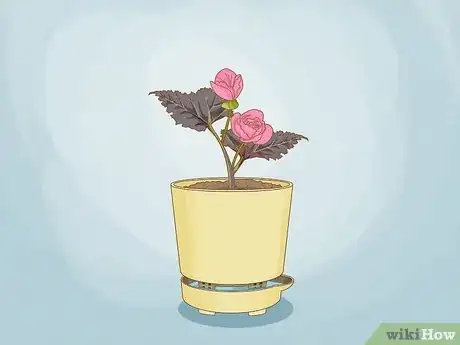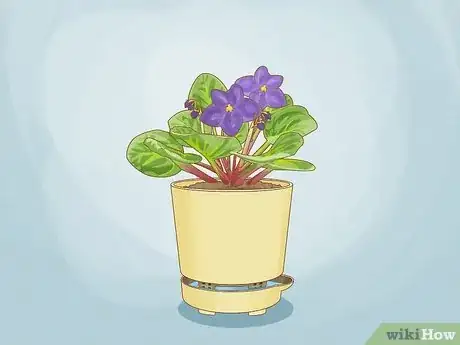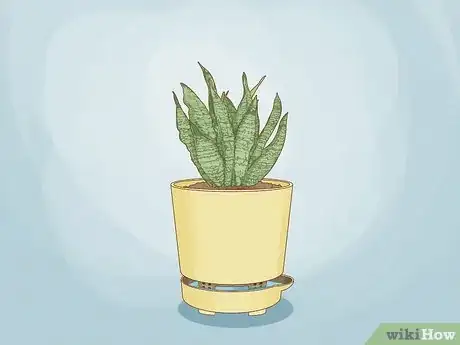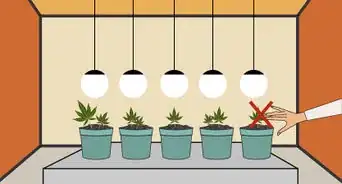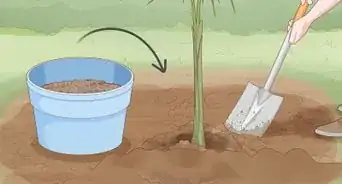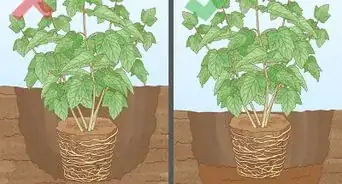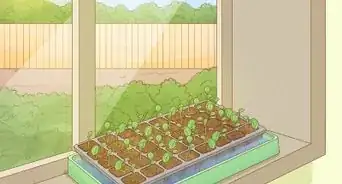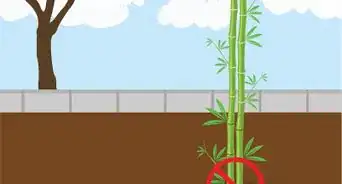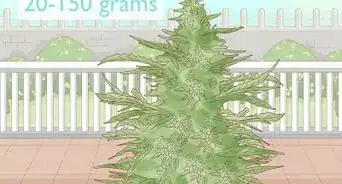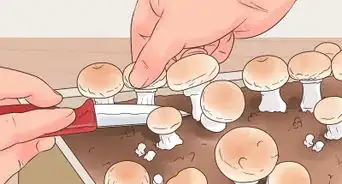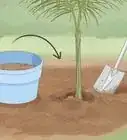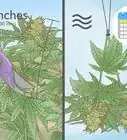This article was co-authored by wikiHow staff writer, Hunter Rising. Hunter Rising is a wikiHow Staff Writer based in Los Angeles. He has more than three years of experience writing for and working with wikiHow. Hunter holds a BFA in Entertainment Design from the University of Wisconsin - Stout and a Minor in English Writing.
There are 15 references cited in this article, which can be found at the bottom of the page.
This article has been viewed 16,357 times.
Learn more...
If you want to add some lush plants to your decor but don’t have the time to water them, then a self-watering pot may be a good fit for you. Self-watering pots absorb as much water as they need from reservoirs on the bottom, so you only need to worry about refilling them once they’re empty. They're perfect for watering plants while you're away or if you just have a busy schedule. Just keep reading to learn how a self-watering pot works and how you can use one for your plants.
Things You Should Know
- Plant your plants in the top or inner section of the self-watering pot with moist potting mix.
- Water the topsoil the first time you use your self-watering pot to compact the soil on the plant roots.
- Fill the bottom reservoir whenever it’s empty to water your plant.
- Self-watering pots pull water up from the reservoir into the soil. The water absorbs into the soil directly or absorbs up a wick.
Steps
Filling and Using a Self-Watering Pot
-
1Attach the water reservoir to the bottom of the pot. Check out pieces that make up your self-watering pot. Locate a bottom reservoir that stores water and a pot with holes (or a wick) that you use to actually plant your plant. Set the planting pot on top of the reservoir or snap it into place so it’s secure.[1]
- On some self-watering planters, the reservoir is a larger outer pot and the pot you plant into sits inside of it.
-
2Add moist potting mix to the bottom of the pot. You can use any standard potting mix for your plants. Moisten it with a little bit of water and fill the bottom third of the pot with your soil. Keep the potting soil loose and avoid compacting it down. That way, your plant's roots will grow in easily and water can move through the soil faster.[2]Advertisement
-
3Plant your plants into the soil. Break apart the soil around your plant’s roots, and plant it in the pot. Fill in around the plant roots with your potting mix until it’s about 1 inch (2.5 cm) below the pot’s rim.[3]
- Gently press the soil down around your plant but don’t compress it completely. Otherwise, it may be hard for the roots to establish.
-
4Water your plant from above to compact the soil. The air pockets in the soil prevent it from making the best contact with your plant’s roots. For the first time you water a self-watering pot, water the soil directly. Once the soil compacts, fill in any low spots of soil in your pot with extra potting mix and water it again.[4]
-
5Fill the reservoir completely with water. Check the reservoir on the bottom of your self-watering planter and add more water if it isn’t completely full. Usually, the reservoir is transparent so you can see the water level or there will be a fill meter telling you how much water is left. Fill your self-watering pot from the fill tube sticking up from the side of the pot or by pouring it into a spout on the side of the reservoir.[5]
- Refill your self-watering pot whenever the reservoir’s water level is low. Depending on how much water your plant needs, you may need to refill every few days to once every few weeks.
Warnings
- Succulents and cacti aren’t great for self-watering pots since they don’t grow well in soil that’s consistently moist.[17]⧼thumbs_response⧽
References
- ↑ https://youtu.be/OfP98oy4ygU?t=61
- ↑ http://www.thegardenacademy.com/gardening-basics/self-watering_containers/
- ↑ https://youtu.be/5EE3vgFFQQY?t=320
- ↑ https://youtu.be/5EE3vgFFQQY?t=335
- ↑ https://youtu.be/ZdtQdXkQmlA?t=332
- ↑ https://extension.umd.edu/resource/self-watering-containers
- ↑ https://youtu.be/OfP98oy4ygU?t=167
- ↑ http://www.thegardenacademy.com/gardening-basics/self-watering_containers/
- ↑ http://www.thegardenacademy.com/gardening-basics/self-watering_containers/
- ↑ https://youtu.be/5EE3vgFFQQY?t=171
- ↑ https://youtu.be/41UHHIlNrVM?t=274
- ↑ https://www.burkesbackyard.com.au/fact-sheets/in-the-garden/indoor-and-potted-plant/maidenhair-fern/
- ↑ https://youtu.be/w4D_NNMKIYs?t=70
- ↑ https://gardeningsolutions.ifas.ufl.edu/plants/ornamentals/begonias.html
- ↑ https://gardens.si.edu/learn/educational-resources/plant-care-sheets/care-of-african-violets/
- ↑ https://youtu.be/ZdtQdXkQmlA?t=187
- ↑ https://youtu.be/5EE3vgFFQQY?t=272
